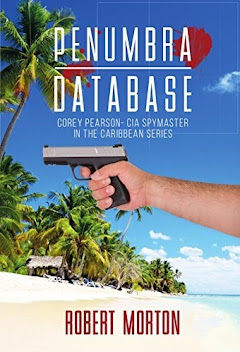 |
| She was built for secrets, born in silence- and she's still watching from 70,000 feet up. |
James May figured he was just hitching a
ride. He’d handled high-speed chaos behind racing car wheels for years, but
this? This was different. Strapped into a U-2 spy plane, sealed in a pressure
suit made for the edge of space, he wasn’t just going for a flight—he was
stepping into a shadow war that never really ended.
The aircraft? Lockheed’s U-2. The brass
called her Dragon Lady. Sounded elegant. Almost graceful. But that name wasn’t
poetic. It was a warning.
She was built during the Cold War, when
paranoia ran the Pentagon. The CIA needed eyes above the Iron Curtain—higher
than radar, higher than fighters. So they built a jet that didn’t exist. It
flew alone, unarmed, and dared the world to catch it. They didn’t. Not at
first.
And here’s the twist: that same ghost of
an aircraft? Thirty-five are still flying. No drone, no stealth craft, no
satellite can quite do what the Dragon Lady can. Satellites fly by. Drones get
jammed. But the U-2? She just cruises quietly, watching.
She flew over Ukraine last year, snapping
crisp images of Russian tanks before most people even knew the war had started.
Later, she drifted above the Pacific, capturing that Chinese spy balloon with
so much clarity you could count the bolts. Compared to her, satellites draw
with crayons.
She’s not a relic. She’s a high-altitude
truth machine. And she still pulls secrets from the sky.
Flying the Dragon Lady isn’t your average
assignment. It’s not just a job—it’s a test of everything you’ve got. You don’t
just learn to fly her; you survive her. Landing that plane? It’s like threading
a needle in a hurricane. One wrong move, and she’ll take you down hard. Most
pilots don’t make the cut. The few who do earn a call sign… and then disappear
into the classified world they trained for.
Up there, they eat tube food. One an hour.
Chicken à la king. Chocolate pudding laced with caffeine. You don’t blink. You
don’t pee. You endure.
Back in the day, the CIA ran everything.
Pilots were “sheep-dipped”—they resigned their military rank, vanished from
records, and reappeared as civilians flying unmarked jets. If they got shot
down? The U.S. could say, “Never heard of him.”
These jets weren’t tracked with standard
serials. Each had an “Article Number,” referenced only in vault-locked memos
typed on machines older than the men flying the planes.
That legacy hasn’t gone anywhere.
Especially not in the world of Corey Pearson.
In the Corey Pearson–CIA Spymaster Series,
the U-2 isn’t just a background relic—it’s front and center. Pearson’s CIA team
doesn’t rely on satellite feeds or AI. They work from old-school
black-and-white prints rolled out in Langley’s war rooms. A heat signature
here. A camouflaged truck there. Signs of something the rest of the world
missed. The Dragon Lady catches it first.
Pearson trusts the U-2 like an old
blade—scarred but still sharp. Maybe even sharper.
There’s a book, Remembering the Dragon
Lady, filled with gritty, first-hand accounts from the 4080th Recon Wing.
Cold War flights. Near-miss decompressions. Missions authorized with a nod and
a lie. The kind of stories that only got told once the danger had passed.
Barely.
One pilot wrote, “In 1951, modified
bombers began overflights of the Soviet Union, and a number of border flights
were shot down. At that time, the planners imagined a high-altitude aircraft
hard to detect and impossible to shoot down.”
They imagined it. Then they built it.
And today? She still flies. Because
sometimes you need a human in the sky. Someone to make a judgment call in real
time. To see the difference between a decoy and the real deal. A pilot who
understands that in the fog of war, you don’t always get a second shot.
When the world quiets and the tech goes
blind, she’s still up there—cruising above it all. Watching. Waiting.
The U-2 spy plane plays a critical role in
the Corey Pearson–CIA
Spymaster Series, and in scenes like this one, it’s easy to see why:
Hours later, deep inside Langley, the lights were low and the air was thick
with the buzz of quiet urgency. Corey Pearson stood at the head of the table,
sleeves rolled up, eyes locked on the black-and-white prints just flown in from
70,000 feet.
They weren’t ordinary satellite shots.
These were sharper, closer. Alive. The Dragon Lady had just passed over a ghost
airstrip in Central Asia. What she saw? A buried convoy. Missile tubes. Heat
signatures where none should be.
Pearson leaned in, traced a blurred figure
with his finger. “Zoom in,” he said.
The screen sharpened. A face emerged.
Familiar. Half-turned.
He hadn’t seen that man since Caracas.
The intel officer beside him whispered,
“Confirmation?”
Pearson nodded once. “Yeah. That’s him.”
That single photo—snapped by a jet older
than half the agency—had just changed the next chapter of American espionage.
He tapped the table twice. “Alright. We
move. Tonight.”
Outside, the world slept.
But high above, the Dragon Lady kept watch…and
under her shadow, a new mission had just begun.
Robert Morton is a member of the Association of Former Intelligence Officers (AFIO) and writes about the U.S. Intelligence Community (IC). The Corey Pearson- CIA Spymaster series blends his knowledge of real-life intelligence operations with gripping fictional storytelling. His work offers readers an insider’s glimpse into the world of espionage, inspired by the complexities and high-stakes realities of the intelligence community.





No comments:
Post a Comment